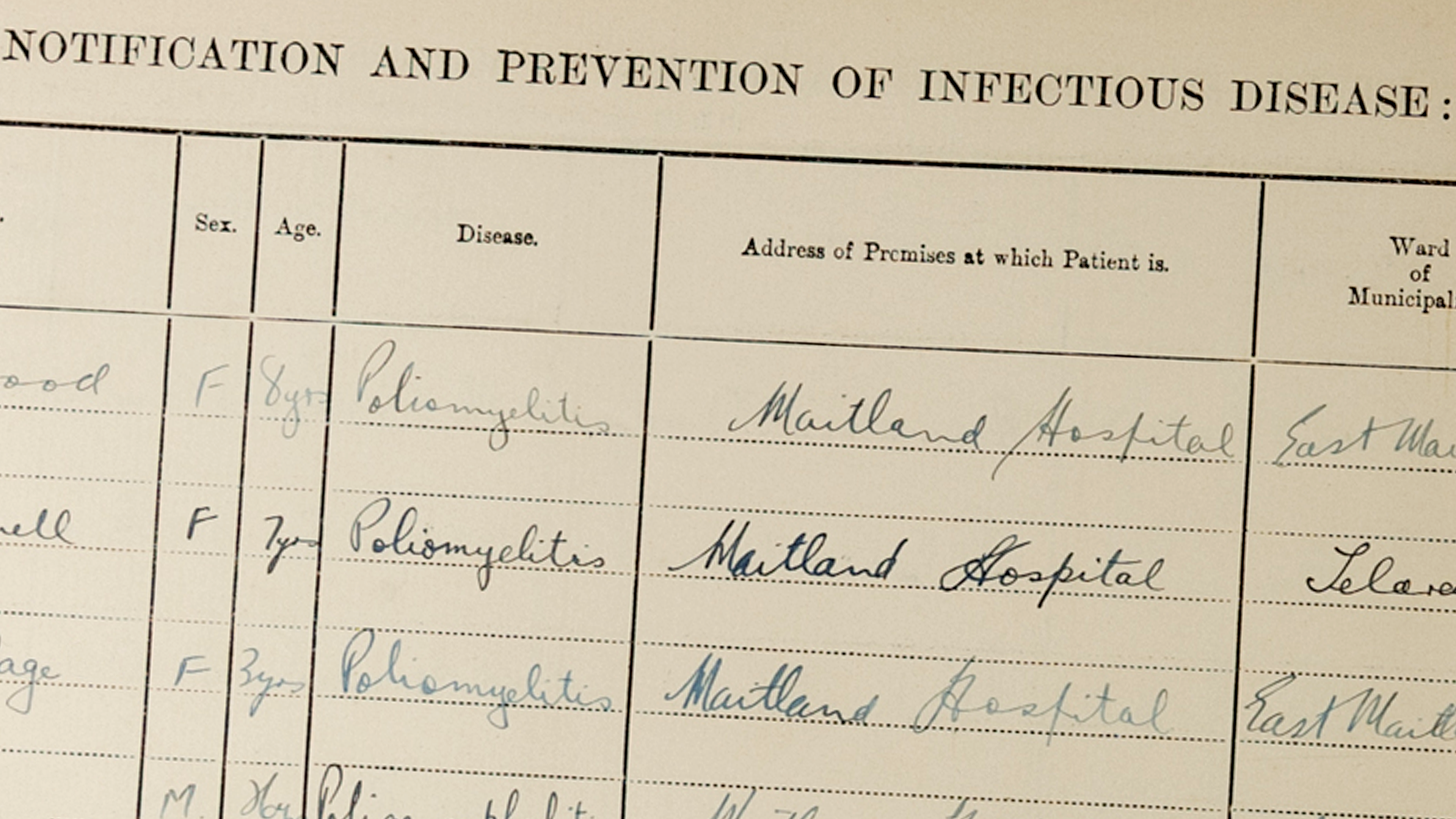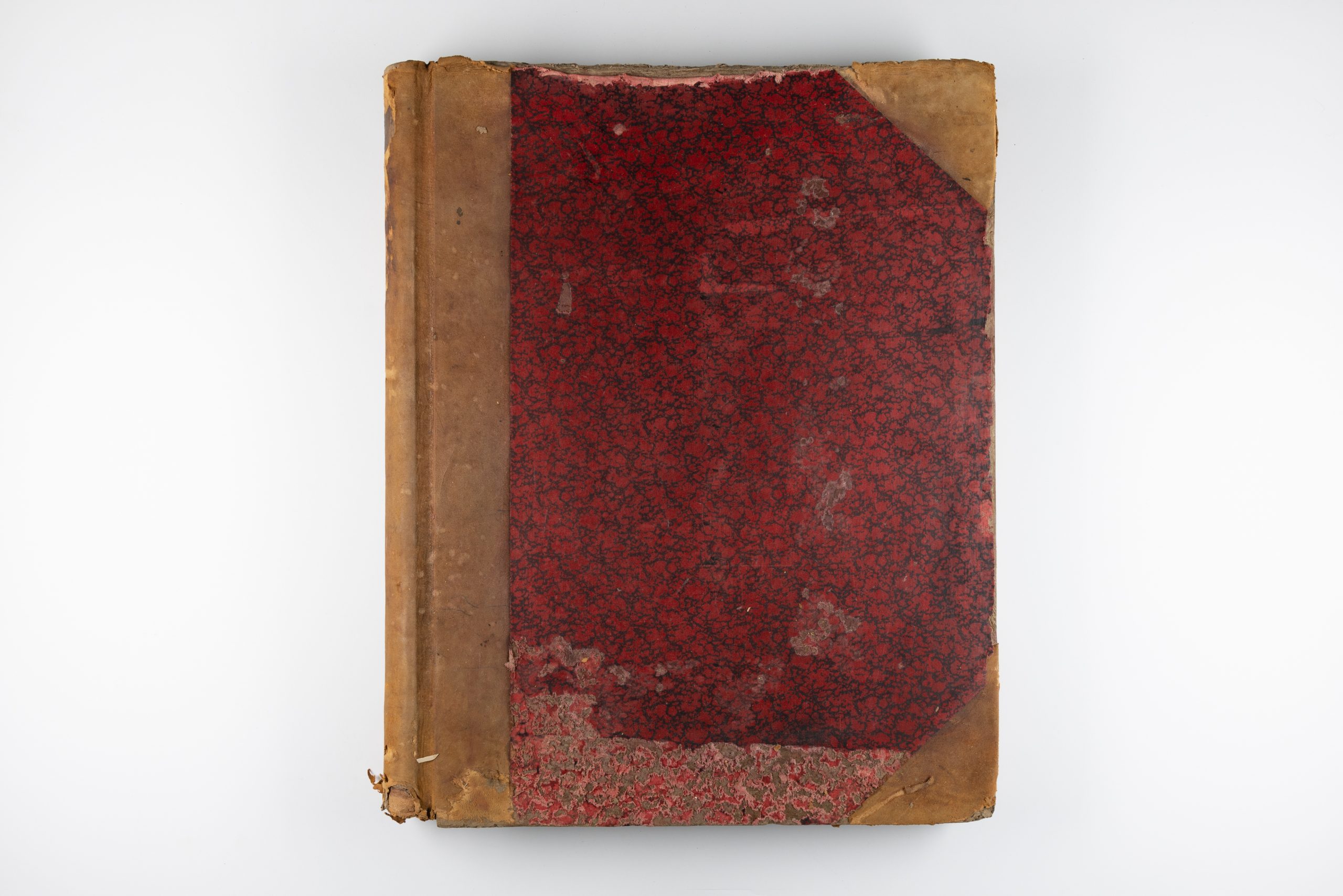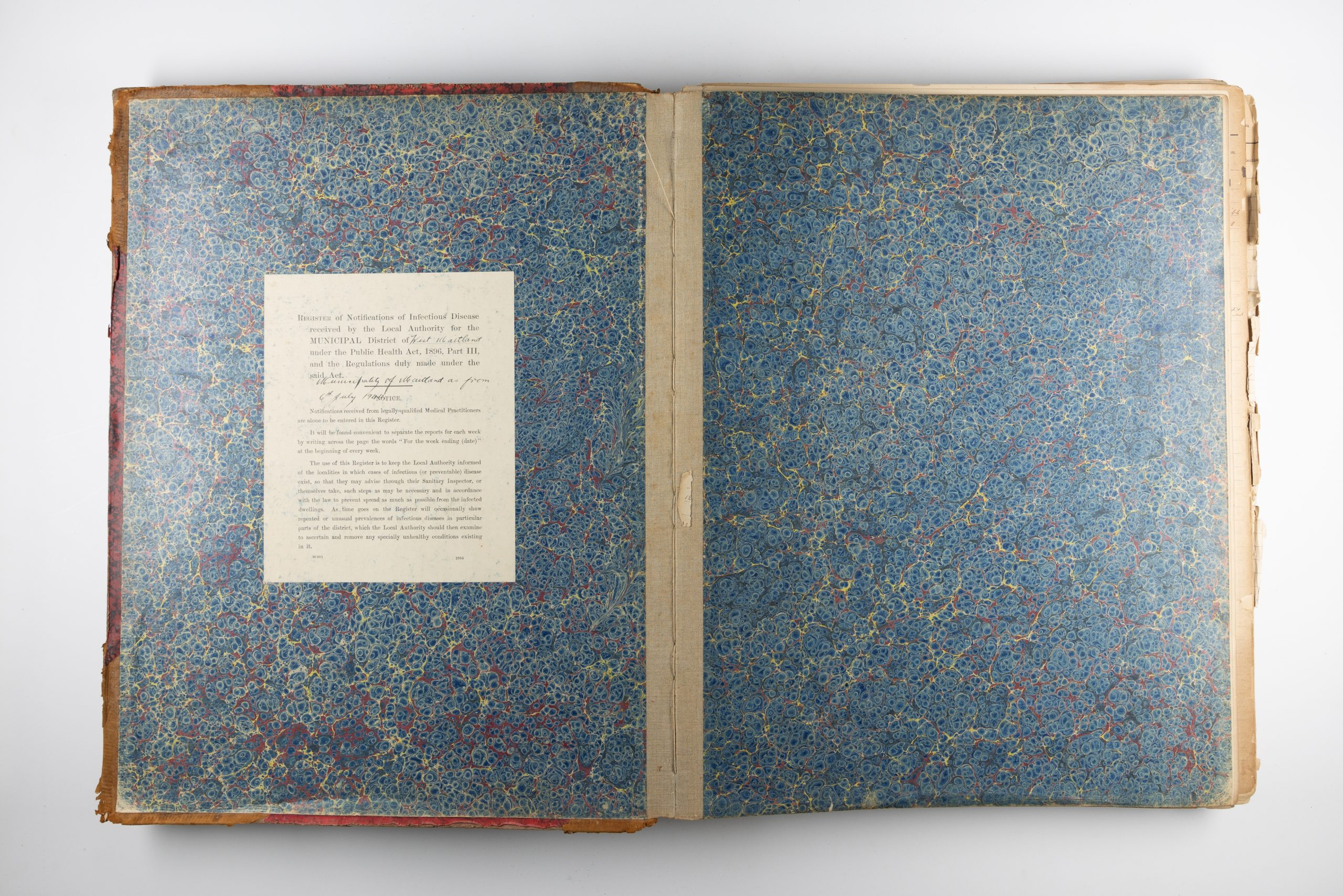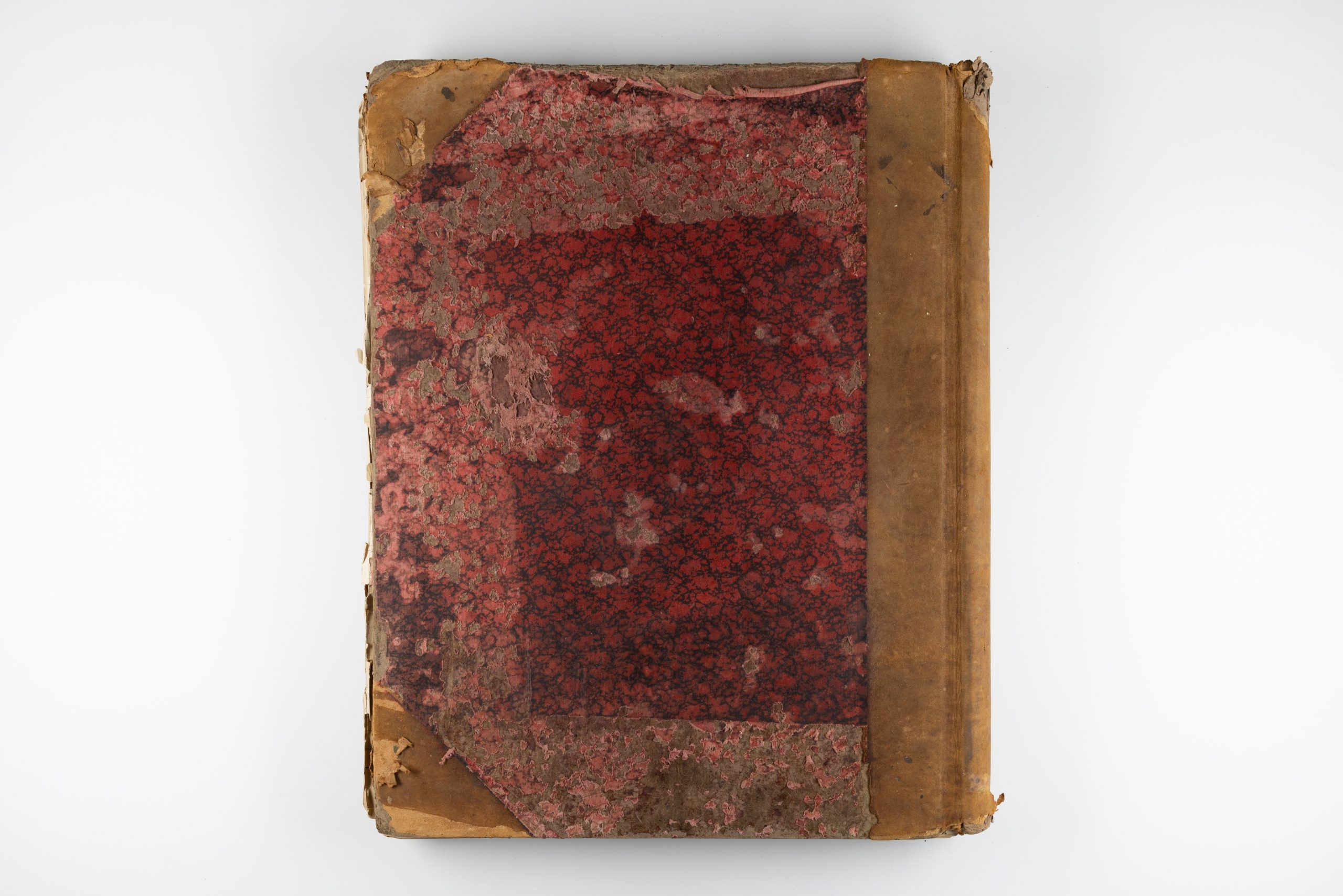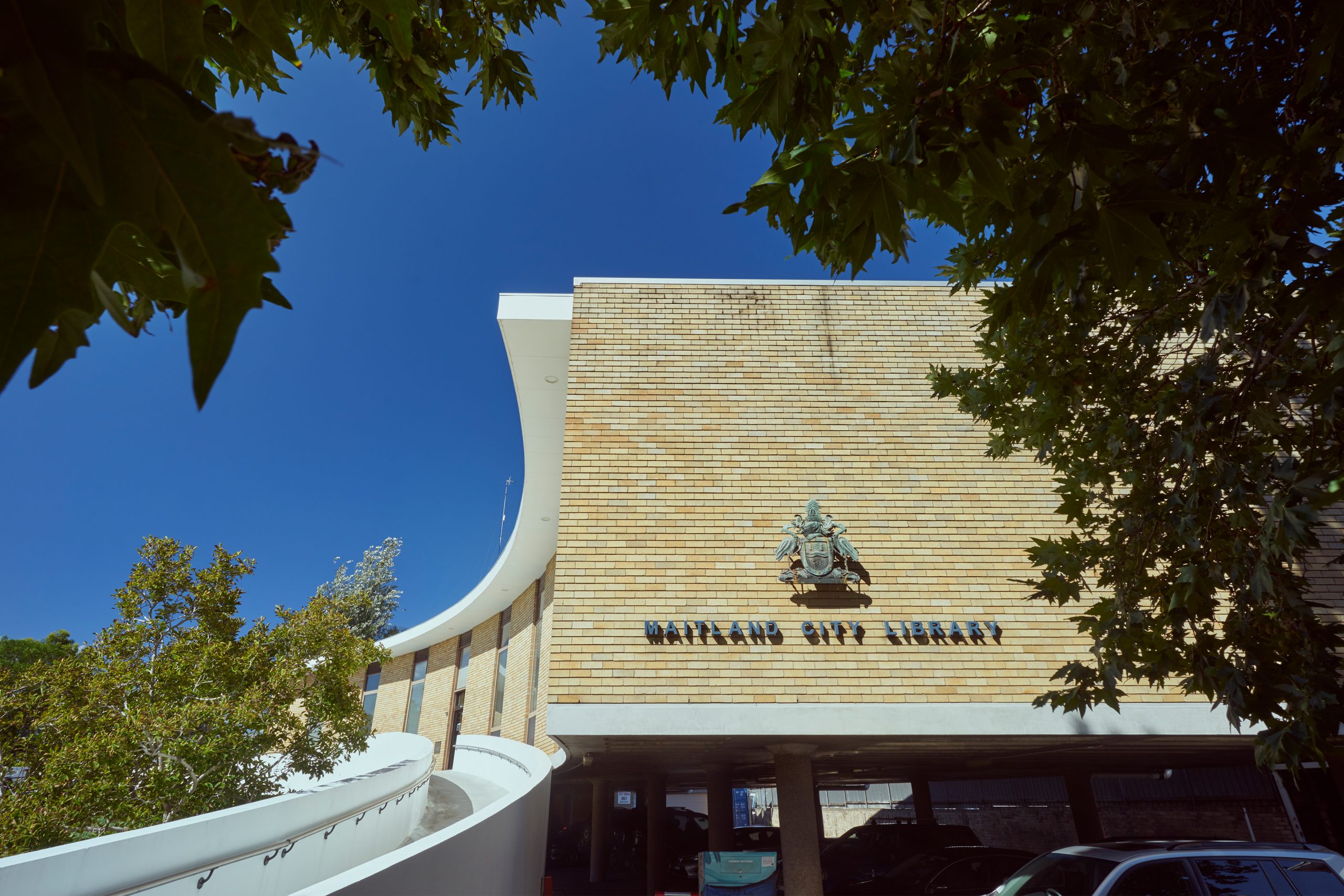A Critical Crusade
Maitland’s Register for the Notification of Infectious Diseases
Seven-year-old Norm Ryan probably never felt so ill when he was admitted to Maitland District Hospital on 18 April 1940.* His symptoms, which might have included a sore throat, swollen neck, rapid breathing and fever were recognised as diphtheria and the hospital immediately notified East Maitland’s health inspector Basil Volckman. The following day, he attended the boy’s home at East Greta and disinfected the premises. On returning to his desk, the inspector recorded Neil’s case in this ledger – Maitland’s ‘Infectious diseases notification register’.
Such rapid action and detailed reporting were part of a crusade to stamp out the deadly bacterial disease. During the height of the diphtheria epidemic in Australia, between 1926 and 1935, over 4000 Australians died from the disease, most of them children. Despite the introduction of immunisation in the late 1920s, there were many children that remained unvaccinated, even in 1940, when Neil Russell was admitted to Maitland Hospital. In the Hunter region there had been 530 cases in 1938, and eleven people had died, including nine children, none of whom had been immunised.
Supplied by the NSW Board of Health, printed ledgers like this were supplied to local councils around NSW to assist with efforts to control the spread of infectious diseases. The cases entered into Maitland’s register throughout the 1940s were nearly all diphtheria, and another equally feared killer of children, scarlet fever. But by the 1950s and 1960s, as immunisations became more widespread, public hygiene improved, and milk became pasteurised, listings of those two diseases became replaced with other grim public health spectres, including poliomyelitis, meningitis and hepatitis.
The final cases in this register were recorded in 1974, but its importance as a means for controlling the spread of infectious disease resonates loudly today as the world grapples with ongoing waves of COVID-19.


